In 2004, Carhartt released a photo book documenting the emerging skate scene of Mongolia’s capital city, Ulaanbaatar. Ten years later two photographers, Percy Dean and Cyrille Weiner, and a handful of skaters, retraced the travels of their predecessors. They set out to skate across the desolate landscapes of a country in the midst of change, between industrial sites, the concrete walkways of the city, and the green expanses of the surrounding suburbs. As well as to share their passion with the local skate scene, a meeting illustrated in a book just published by Carhartt. We meet the two photographer-explorers to speak about the expedition, the spirit of skateboarding, Mongolian youth and the urban evolution of the country.
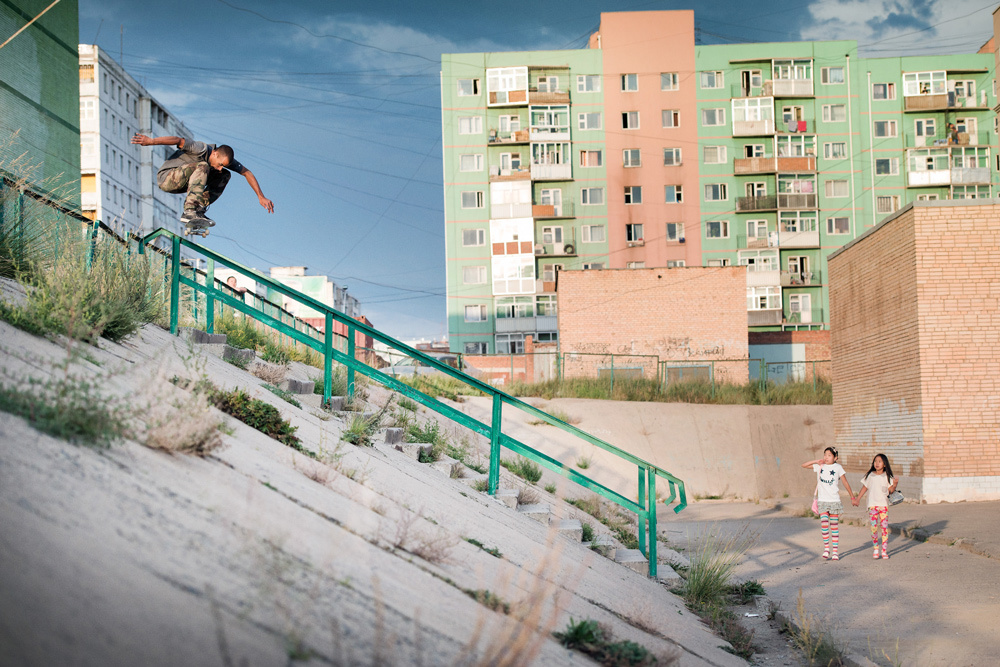
Both your approaches to photography are very linked to geography. Can you tell us why and how?
Percy Dean: I think maybe it’s because of my years in skateboarding, I’ve spent my life trying to represent how skateboarding is much more than just tricks. It’s about the people you interact with and the places you interact with. I think the sequencing of imagery especially within skateboarding has grown up a lot in the past 10 years and the use of alternate views on the geography we all inhabit and pass through is essential to retain the story of the importance of skateboarding in people’s lives.
Cyrille Weiner: In my work I like to contemplate nature and architecture, generally I’m interested in the transformations and occupations of places.
Have you ever worked together before?
Percy: No. I’ve never actually worked with any other photographer on the same project before. I thought it may turn out to be some weird forced collaboration where we both sacrificed what we believe in for the other person, but it wasn’t. We shot quite separately from each other and aside from evening chats over a plastic bottle filled with fermented horse milk we managed to find what we were both individually looking for out there.
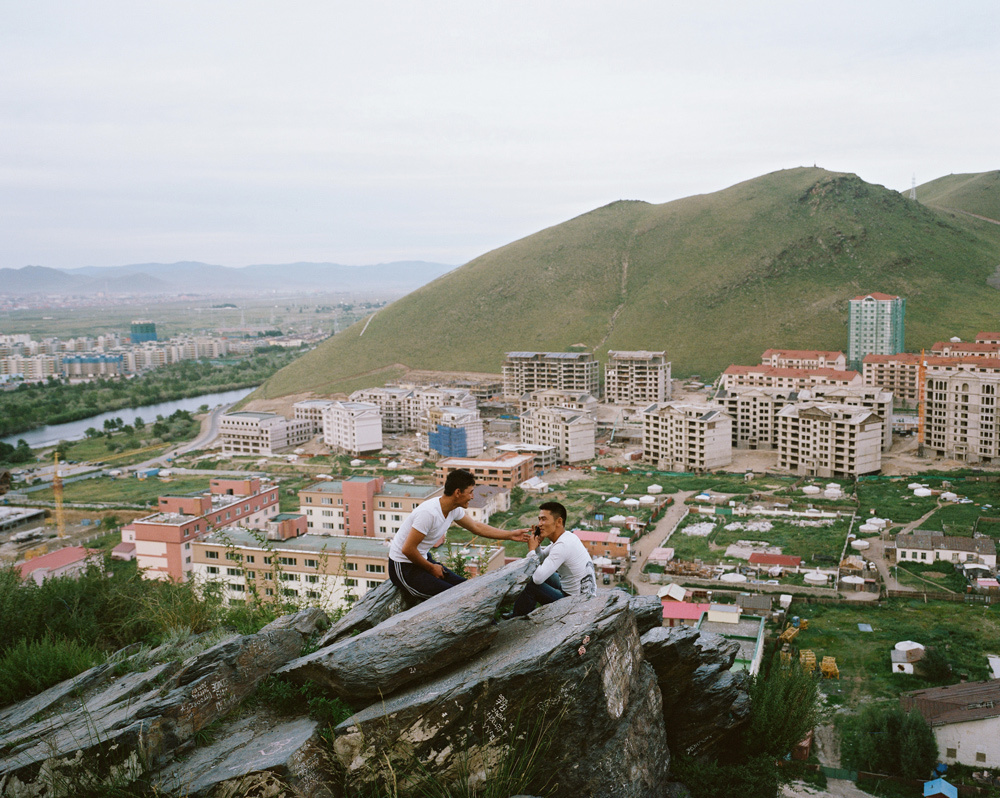
How did you decide to embark on such an adventure?
Percy: I’ve worked on a lot of projects for Carhartt over the years, they are one of the few brands that truly understand imagery and the power of narrative to bolster a brand story and subsequently do it very well. They put their hearts and wallets on the line for every single one of these amazing projects because they truly believe in them and so when they ask me to help out I will never ever say no.
Cyrille: Bertrand Trichet – the manager of the project and also one of the photographers who were part of the book project in Mongolia 10 years ago – is a close friend. He knows my work very well and he knew long before even me this was a project I could do something interesting with. I was seduced by the idea of a trip with skateboarders because I had the feeling that there were some similarities between the way they appropriate spaces and search for spots and my own photography practice which deals with a search of alternative occupations.
You captured a lot of desolated spaces in Mongolia. Can you tell us a bit about the particularity of the country?
Percy: There were a lot of desolate areas both in and out of the towns and cities, but it’s a country in real transition; I think they are evolving and building so fast that maybe some of the spaces didn’t get finished to a “western standard.” They just do it and move on, then two years later it starts to crumble. I know they aren’t really very good a prioritizing pavements or fixing holes in roads, but who are we to criticize? We have a Starbucks on every corner and 4G everywhere, but they have Golden Eagles soaring over their heads and herds of wild horses running through the greatest vistas in the world.
Cyrille: Ulaanbaatar is a dense city, and almost the only big city in Mongolia. The rest of the country is steppes and small towns. It’s changing a lot. The country has changed more in the ten years than in thousands of years before. It’s a nomadic culture but it is changing very quickly, especially in Ulaanbaatar, which seemed to absorb the worst of western world very quickly.
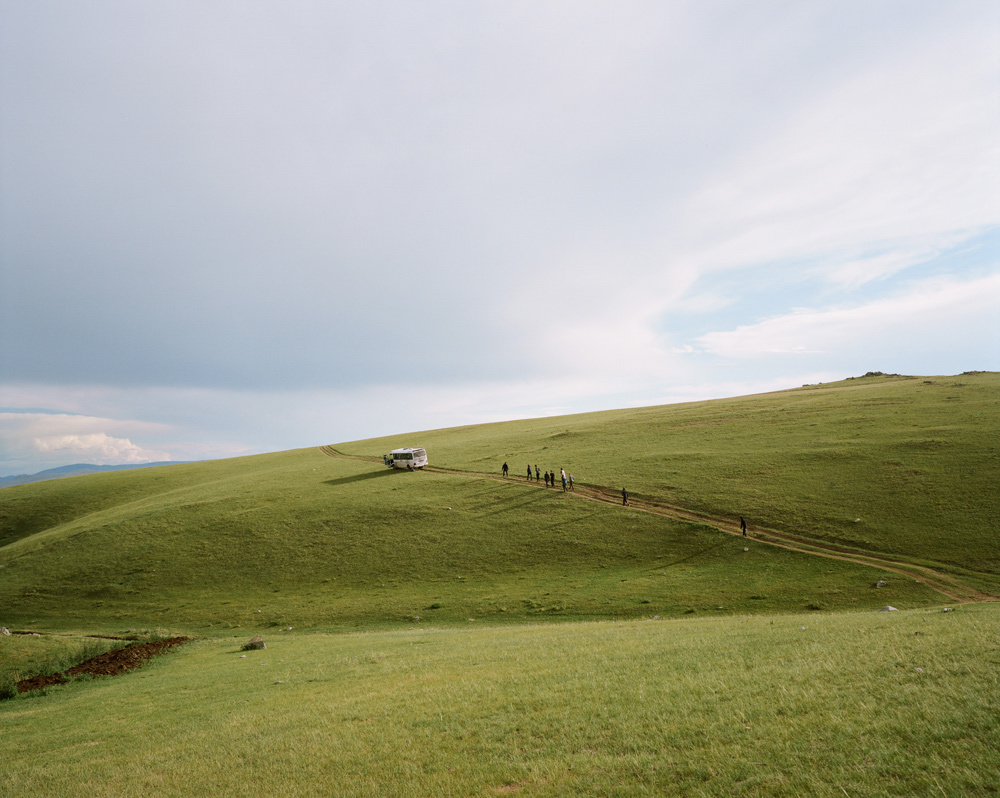
Were you into skateboarding before starting this project?
Percy: I’ve been a skateboarder for over 28 years, it’s who I am. Everywhere I’ve been, everyone I know and love, everything I do has been influenced directly or indirectly by skateboarding.
Cyrille: I am not, but a lot of my close friends were and some still are, and I am interested in the visual culture that relates to skateboarding.
How does your skateboarding photography differ to your normal one?
Percy: I think when I shoot skateboarding now it’s almost harder than commercial or documentary work. I have this overwhelming mass of skateboarding imagery in my head, when I try to frame or light skating I’m battling against 28 years of influences and stereotypes that I’m either trying to embrace or avoid. It’s hard, it means so much to me I don’t want to let it down.
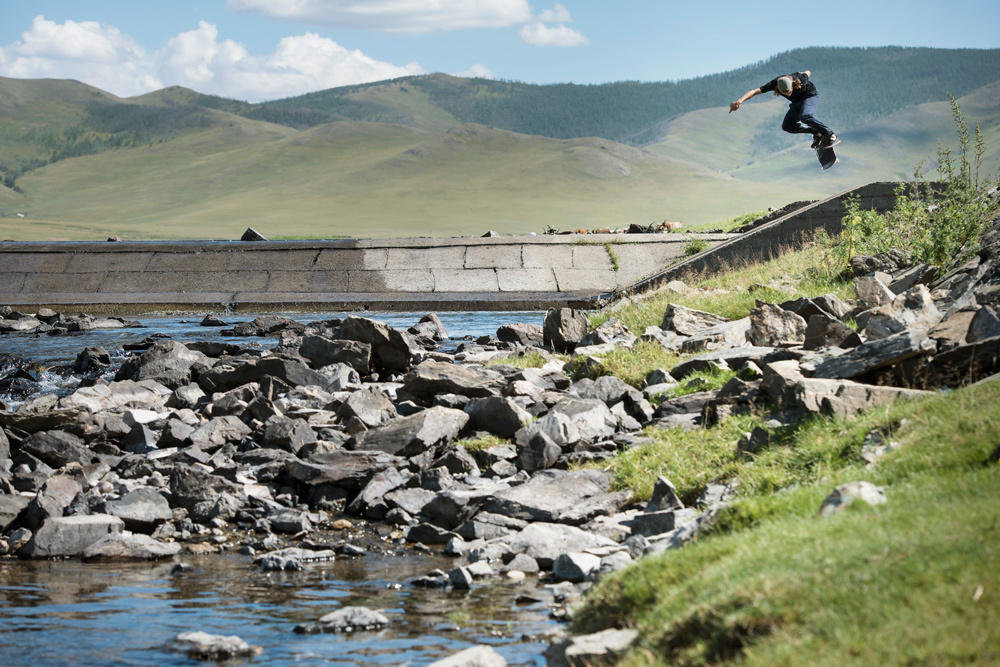
Can you tell us about the skate scene of Mongolia?
Percy: There’s a small scene and it’s only in Ulaanbaatar. They are heavily influenced by stories of western skating from the few kids from Mongolia that have been to the US or Europe. It’s like looking at myself when I first started, your eyes are so focused on what’s around your immediate group, your friends, the three mile circumference from where you live. I think that limited access to the internet and print media helps them retain that innocence. As soon as they all have iPhones and broadband they will evolve to be just like the rest of us. It’s a shame.
Cyrille: It is new and has great potential. But it’s not mature and our trip was a way to plant seeds, I think.
What’s youth culture like in Mongolia generally?
Percy: Innocent from the influence of westernization, but wiser and tougher than all of us put together when dealing with the practicalities of real life.
Cyrille: It’s full of curiosity and undergoing an incredible movement of change. The urban youth scene in Ulaanbaatar is very porous to western influence, probably too much so. Their own ancestral nomadic culture is so singular that I hope they won’t throw it away in the process of change.
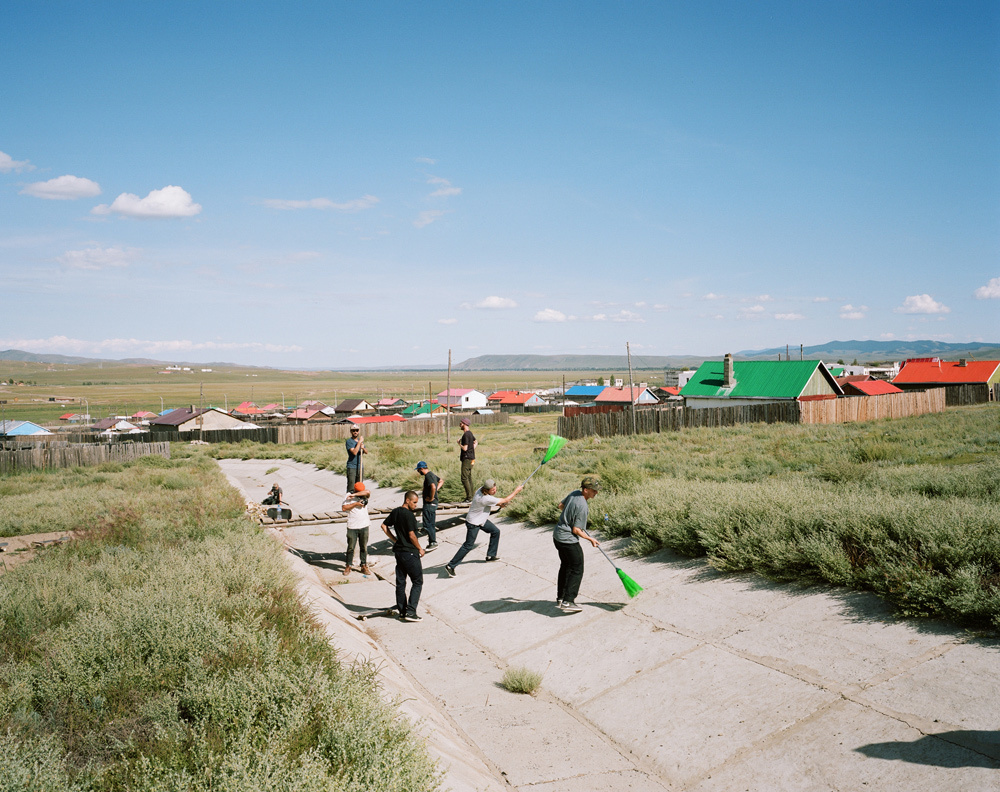
Credits
Text Micha Barban-Dangerfield
Photography Percy Dean and Cyrille Weiner
